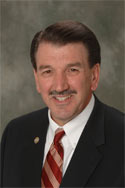Adjunct or contingent faculty — the part-time year to year teachers, often on semester to semester or even course to course appointments — make up an ever increasing portion of the teaching force at public universities. They are, however, largely invisible, and this formula is destined to change the university more than any other single phenomenon, internet included.
“Being an adjunct is sometimes hard on the ego as nobody knows you are there except the students and maybe the security guard, cafeteria ladies and librarians.”
— Kim Burdick, adjunct instructor of history —
____________________________________________________________
The Daily Iowan’s editorial board posted a dirge on the dramatically increasing numbers of adjunct faculty March 29, 2010. In 1960, 75% of the faculty at U.S. universities were either tenured or tenure-track, and full-time. In 2011, 27% hold that status. At the University of Iowa from 2005 to 2011 adjunct faculty increased 19% while tenured and tenure-track faculty only grew 6%.
 “Efficiencies” are the primary benefit of adjunct teachers. Adjuncts spend almost double the time in the classroom as their tenured colleagues at less than half the pay creating the facade of economy.
“Efficiencies” are the primary benefit of adjunct teachers. Adjuncts spend almost double the time in the classroom as their tenured colleagues at less than half the pay creating the facade of economy.
The Center on Budget and Policy Priorities reports that from 2007 to 2013 state appropriations for higher education have dropped $16.8 billion, a decline of nearly 20%. However during that same time enrollments had increased by 1.2 million students or 11.7%, diminishing the appropriations per full-time enrolled students from $8,487 to $6,134, or nearly 28%.
In response to a Wall Street Journal editorial, Mediamatters for America posted a study in August this year indicating the average tuition at public four-year colleges is increasing dramatically. In Arizona, from FY 08 to FY 13, the inflation adjusted increase per student of $4,275 led the nation. These figures do not include fees — the popular tool used to hide unpopular tuition increases.
Growing the number of adjunct faculty lessens tuition increase rates and reduces the size of Pell grants. Adjuncts are becoming shock absorbers in the broken financial mechanism of U.S. higher education.
The price of low-cost teaching?
In 2010 the University of Iowa received $429.5 million in research funding generated by the 1,672 tenured faculty members: About $250,000 each. This same faculty group accounts for 62% of total teaching staff. A reduction of 10% of the tenured faculty, to be replaced by contingent faculty, could lead to a $43 million reduction in research funding, and compromised reputation to boot.
Funded research is supported by the painters, poets, performers and philosophers who spark insight, creativity and inquisitiveness in students and faculty, even though they may not secure vast sums of extramural support.
Strong tenured faculty members are like cottage industries. At Iowa, there are 1,672 of them.
Institutions downplaying or devaluing scholarship, research, creative activity, and public and professional service are no longer universities. Contingent faculty members are less valued by the university community: The lower pay and higher workloads stridently affirm that perspective.
To rub salt in the wound, the Affordable Care Act may force adjuncts out of some state health care systems. In Washington Keith Hoeller, a 25-year adjunct, reported in The Olympian, that contingent faculty toil and earn at levels consistent with the national norms: 200% course loads and 50% pay. When on half-time appointment, Hoeller says they fall below the federal poverty level of $19,530 for a family of 3.
Some of the best teachers I know are adjuncts. A very few produce scholarship beyond teaching, but they are only compensated for teaching. However, the scholarly and service function of a research university is sacrificed if two of the three legs on the stool are weakened. An antiquated model? Maybe, but research funding is essential to research universities.
The advance of distance education further exacerbates the muddle. Contingent “faculty” may work out of their kitchen. (Another economy, no office.) Students forego the intellectual life of on-campus engagement. That lack of access has trickled into the teaching community so that neither students nor teachers must come to campus. Everyone is “on the wire.” Soon, a student will cause an accident: He will have been attending calculus class on his cell phone at 55 mph, and the electronic record will memorialize it. Looking for a derivative, he neglected to yield the right-of-way.
At least he didn’t skip class.
Something has to give. University teaching is being transformed from a three-part harmony of engaged instruction, research, and service, to a monotone composition, delivered anywhere anytime at the speed of light.
Our universities can’t balance the books on the back of low-cost teaching; no matter how committed or capable the teachers are, unless they are willing to stop being universities.


Speak Your Mind
You must be logged in to post a comment.